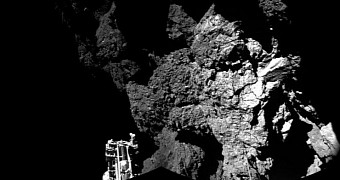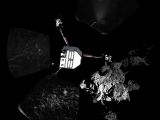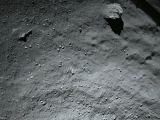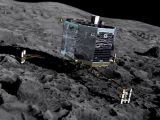Just a couple of days ago, on November 12, the European Space Agency's Philae spacecraft landed on the surface of Comet 67P/Churyumov-Gerasimenko. With the help of screws embedded in its feet and two harpoons, the lander managed to attach itself to the comet's body.
The Philae lander, the Rosetta spacecraft that carried it on its back for about 10 years, and Comet 67P/Churyumov-Gerasimenko are now at a distance of over 511 million kilometers (approximately 317 million miles) from Earth.
They are traveling through space at a speed of about 18 kilometers per second (11 miles per second) and are heading for the Sun. As it approaches this star, Comet 67P/Churyumov-Gerasimenko is expected to pick up speed.
The Philae lander is in a little bit of trouble
Scientists with the European Space Agency say that, although alive and kicking, the Philae lander is not exactly having the time of its life. On the contrary, it appears that the spacecraft didn't exactly land in the best possible place.
Admittedly, it was weeks ago that researchers settled on a landing site for Philae. The thing is that, when it made it to the surface of the comet, the lander failed to settle down as expected of it. In a nutshell, it bounced off twice.
Because of these unplanned and unexpected joyrides, the spacecraft ended up pinned against the bottom of a cliff, probably oriented at a rather steep angle. Hence, it could be that the lander isn't holding on to its target comet all that well.
Besides, scientists say that, according to data at hand, it appears that Philae is bound to only receive about 1.5 hours of sunlight once every 12 hours. Since the lander relies on solar panels to remain operational until next year's March, this is a problem.
As detailed by Nature, the lander's primary battery only had enough juice to keep it up and running for about 64 hours following the separation from the Rosetta spacecraft, which occurred on November 12 at 08:35 GMT / 09:35 CET.
This means that, unless it finds a way to deploy its secondary rechargeable battery, the Philae lander will soon cease to function. Simply put, it will no longer be able to snap photos of the comet and study its anatomy and makeup.
What's more, researchers say that, even if powered properly, the lander might not be able to drill into the comet to collect samples from its core. This is because, if it is true that Philae is not properly secured to its target, any drilling attempt could send it flying into space.
A successful mission nonetheless
True, the European Space Agency's Philae spacecraft failed to make the best possible landing on Comet 67P/Churyumov–Gerasimenko. Then again, the fact remains that, hiccups aside, it did make it on its surface and is now traveling through space on its back.
Since Philae is the first spacecraft ever to land on a comet – provided that aliens haven't already pulled such a stunt, that is – its mere presence on the surface of 67P/Churyumov–Gerasimenko truly is an achievement worthy of the history books.
“ESA and its Rosetta mission partners achieved something extraordinary today,” Jacques Dordain, the European Space Agency’s director general, commented on this mission in a recent statement.
Furthermore, “Our ambitious Rosetta mission has secured another place in the history books: not only is it the first to rendezvous with and orbit a comet, but it is now also the first to deliver a probe to a comet’s surface.”

 14 DAY TRIAL //
14 DAY TRIAL // 



